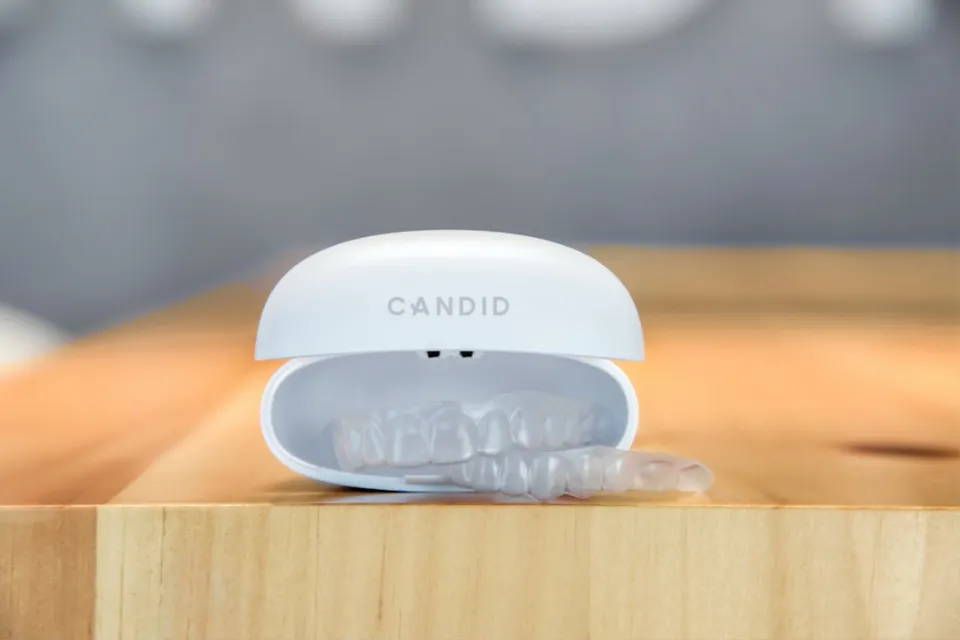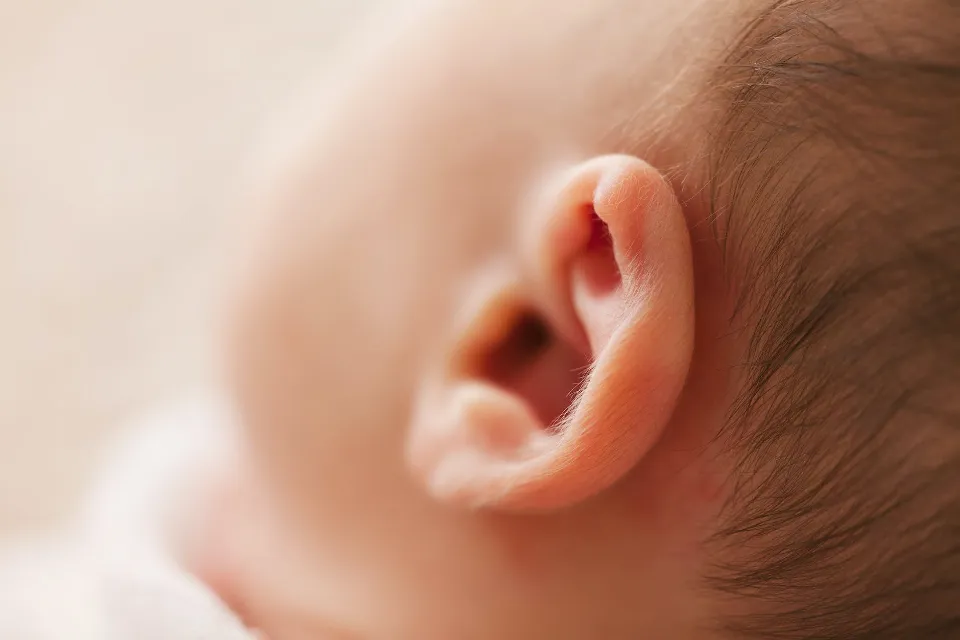It is not surprising that so many people unconsciously clench and grind their teeth given how stressful life can be. The condition, known as bruxism in medicine, causes unintentional stress on the teeth and jaw, which can lead to headaches, dental problems, and even sleep disturbances that could result in conditions like sleep apnea.
In order to act as a barrier and ultimately lessen the effects of clenching, night guards and mouth guards are available. They must, however, be cleaned frequently because they are intended to be worn every night. The issue is that a lot of people are unsure of how to properly clean a mouth guard.
No worries if you’re one of those people: we chatted with two dentists about their tips for keeping night guards in tip-top shape. Read on to discover more.

Table of Contents
Why You Should Clean Your Mouth Guard
You should include cleaning your mouthguard in your dental hygiene routine. Wearing a mouthguard can cause serious health issues if it is not regularly cleaned because the human mouth is a breeding ground for bacteria. Complications include infections, gum diseases, and bad breath. Some patients’ mouthguards have even developed mold over time!
How Often Should I Clean My Mouth Guard?
After each use, you should clean your mouthguard.
The following cleaners are appropriate for daily cleaning:
- toothpaste
- soap and water
- mouthwash
- baking soda
You should deep clean at least once a month, and stronger cleaners work best for this. This includes OTC denture cleaners and vinegar with hydrogen peroxide.
How to Clean My Mouth Guard?
Toothpaste
You can clean your mouthguard with a soft bristle toothbrush and nonabrasive toothpaste. To avoid bacterial cross-contamination, it is best to keep a special toothbrush just for this purpose.
Avoid using abrasive toothpastes and hard brushes because they can harm your mouthguard.
Here’s how to clean your mouthguard with a toothbrush:
- Rinse your mouthguard under cold water.
- Brush the toothbrush with a small amount of toothpaste.
- Brush the mouthpiece softly.
- Clear the toothpaste with water.
- The mouthguard should air dry.
Soap and Water
Utilizing soap and water is an additional choice. Use a mild, alcohol-free soap to avoid damaging your mouthguard.
Examples include:
- antibacterial soap
- castile soap
- dish soap
You’ll also need a toothbrush for this method. To wash your mouthguard with soap:
- Rinse your mouthguard with cool water.
- Your mouthguard should be cleaned with a small amount of soap.
- Gently brush the mouthguard with the toothbrush until soapy.
- Remove all of the suds by rinsing the mouthguard.
- The mouthguard should air dry.
Mouthwash
Due to its antimicrobial qualities, mouthwash is perfect for cleaning your mouthguard. To prevent harm, use mouthwash free of alcohol.
Here’s how this technique is generally used:
- Rinse your mouthguard under cool water.
- Add a capful of mouthwash to a clean glass.
- Dilute with water until there’s enough liquid to cover your mouthguard.
- Soak your mouthguard for 30 minutes.
- Remove and rinse with cool water.
- Dry the mouthguard.
Baking Soda
Baking soda removes debris and reduces bad odors.
Below is a common technique for using baking soda:
- Make a paste in a clean bowl by mixing equal parts baking soda and water.
- Get some paste on a toothbrush. Carefully brush your mouthguard.
- Rinse your mouthpiece under cool water.
- Dry the mouthpiece.
Hydrogen Peroxide and Vinegar
Use hydrogen peroxide and vinegar for a thorough cleaning. Both ingredients are natural and reasonably priced.
Here’s how to clean a mouthguard with this method:
- Using cool water, rinse your mouthguard.
- Put it inside a clear glass. Add enough vinegar to the bowl to cover it. Give it 30 minutes to sit.
- Your mouthguard should be taken out and washed in cool water. Rinse the glass, too.
- Return the mouthguard to the glass and add hydrogen peroxide until it’s covered.
- Spend 30 minutes letting the mouthguard soak in the hydrogen peroxide.
- Rinse your mouthpiece under cool water.
- The mouthguard should air dry.
How to Keep My Mouth Guard Clean?
Your mouthguard can be kept clean by following specific guidelines in addition to cleaning it.
To care for your mouthguard:
- After cleaning, allow your mouthguard to completely dry. By doing this, bacterial growth will be reduced.
- If you’re not using your mouthguard, keep it in a sturdy, vented container. It will dry faster with the help of the vents.
- Clean your storage container every few days.
- Avoid exposing your mouthguard to hot water, hot air, or too much sunlight. Your mouthguard might become less effective if it warps due to high temperatures.
- Keep your mouthguard out of reach of animals that might chew it.
- Clean your mouthguard after it falls to the ground or floor before reusing it.
- Before and after putting on your mouthguard, brush and floss your teeth.
- Never lend out your mouthguard to someone else.
- Bring your mouthguard to your dental checkups. Your dentist can give it a deep clean.

When Should I Replace My Mouth Guard?
The lifespan of your mouthguard depends on many factors, including:
- the material of your mouthguard
- how often you use it
- how well you care for it
The typical lifespan of a mouthguard is five years. But if you use it regularly, you’ll probably need to replace it once a year.
OTC mouthguards might require replacement every few months. In comparison to versions made to order, they are less durable.
Signs you need a new mouthguard include:
- cracks
- tears
- holes
- a loose fit
- reduced thickness
- deformed shape
- causes gum or teeth irritation
- persistent bad odor, even after cleaning
- discoloration
When you visit the dentist regularly, they can look out for these symptoms.
It is advised to thoroughly clean your mouthguard if you recently fell ill. If it has rips or cracks that could hold bacteria that could cause an infection, get a replacement.
Final Thoughts
Brush and floss your teeth prior to putting on your mouthguard. When you take it out, clean it with alcohol-free mouthwash, antibacterial soap, or gentle toothpaste.
Let your mouthguard dry before storing it. Bacterial growth can be aided by residual moisture.
Deep clean your mouthpiece at least once a month with an OTC denture cleaner or vinegar and hydrogen peroxide.
Your dentist can also clean it during your regular checkups. If your mouthguard has cracks, holes, or doesn’t fit properly, it’s time to replace it.
FAQs
Can You Boil a Mouthguard to Clean It?
It will need to be reshaped to fit your mouth, so never boil your mouth guard to clean it. A mouth guard for TMJ, bruxism, or even a sports guard will last longer if it is properly maintained and cleaned, which also helps to avoid the growth of bacteria, mold, and bad odors.
What Do Dentists Use to Clean Mouthguards?
The American Dental Association advises cleaning a mouthguard by brushing it with a toothbrush and toothpaste in a manner similar to how you brush your teeth. Don’t forget to brush every crevice and corner. Then, rinse with cool water to get rid of any food particles and bacterial buildup.
Should I Put Toothpaste in My Mouth Guard?
However, keep in mind that you shouldn’t use toothpaste because it is abrasive and can harm the night guard. Leave the night guard outside to dry for 15 to 30 minutes after you’re finished. This is important because bacteria could grow on the mouth guard otherwise.
Should You Wear Mouth Guard Every Night?
Regularly using a night guard can prevent damage to the teeth and dental appliances, lessen jaw pain and headaches in the morning, and encourage deeper sleep. Take a night guard prescription seriously for these reasons.





